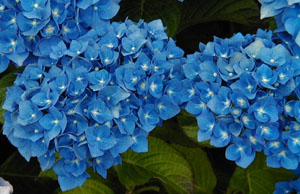Well, I guess they didn't need to be consumed, but they had to be snipped. At least, I think they had to be snipped, but I'm not exactly sure why. If you leave them on, they will go to seed, and that means... I'd get more chives? I'm not sure, but I think that's a good thing. I'm still following directions, though, and my book says to snip the blossoms, so I did, and why not use them for something?

I found a few recipes online and tried two, but I didn't follow either to the letter. You can always count on me to give a recipe a half-hearted attempt. I look at anything with more than three steps and think, how can I make this easier?
Alas, I took a bunch of the blossoms and chopped off the stems so they broke into little purple bits and mashed them into some goat cheese. Like this recipe, I added some lemon zest (half a lemon's worth) and some lemon juice (a whole lemon's worth- too much, I think), some olive oil, kosher salt, and lots of fresh ground pepper. I should have thrown some chives and/or parsley in there, too, and maybe some honey instead of lemon as suggested here, but I didn't. There's always next time.
Last night, we had some leftovers from Sunday's grilling, but I also had some asparagus that needed to be used, and more chive blossoms remaining, so I gave this a go: Asparagus with Sesame and Chive Blossoms. The asparagus spears were really thin so I skipped the blanching step and just sauteed them in some olive oil, adding salt and pepper, and some sesame seeds. Against my better judgement, I added a couple of shakes of soy sauce like the recipe calls for (asparagus and soy sauce didn't go together for me), and it was a good decision. At the end I tossed in the chive blossoms and covered the pan to steam the chive blossoms for a minute or two. It was quick and delicious, and pretty, too, but it was late and I was too tired to take pictures. Sorry.
And that was my foray into cooking with chive blossoms. Did you cook or eat anything delicious over the long holiday weekend?










































![[image[7].png]](http://lh6.ggpht.com/_vswDWGRlsPw/TdHa8DuEZdI/AAAAAAAANWo/7x56MPTkr-g/s1600/image%5B7%5D.png)









